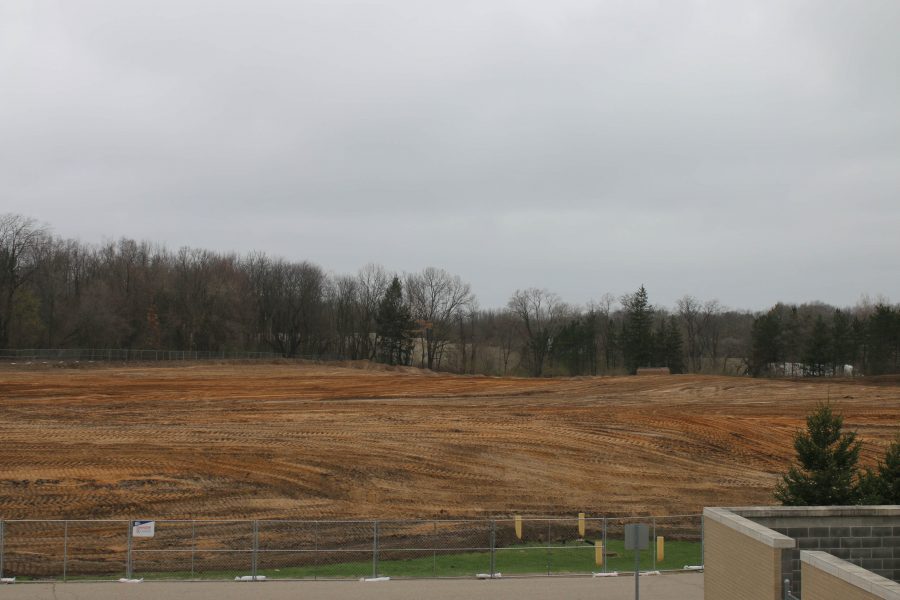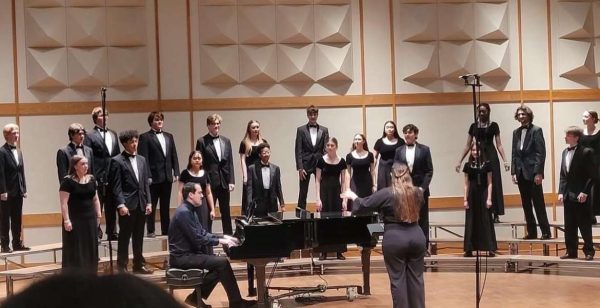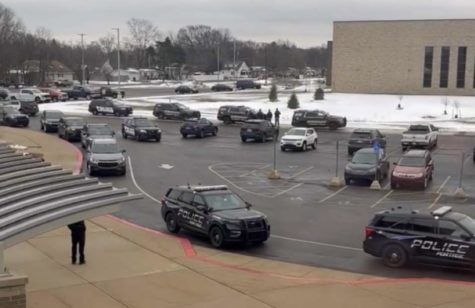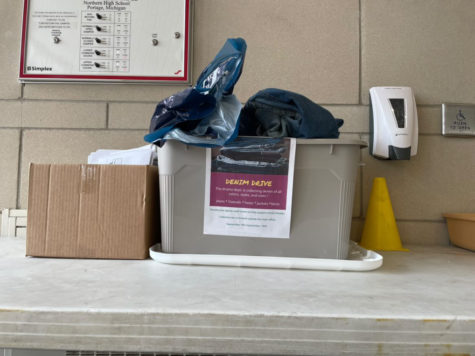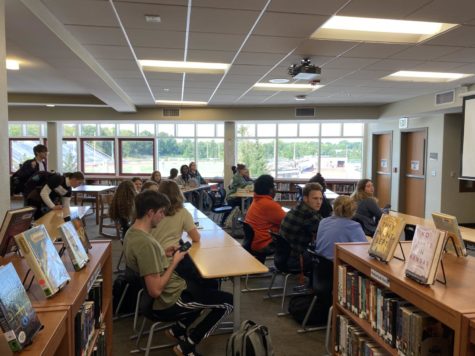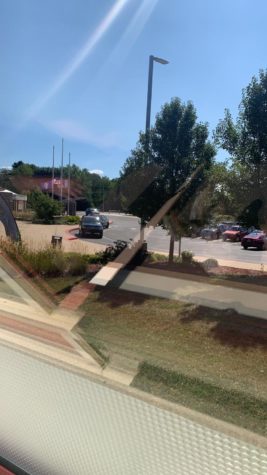Districts keeps environmental concerns in mind as construction begins
The old lacrosse field, which is the future stadium site.
April 17, 2017
Northwest of the school and alongside the perimeter of the current lacrosse field lies a miniature forest of trees. It isn’t solely a collection of trees or woods that a majority of the classrooms on the West end and North side of the school have a decent view of, it is also home to some of the most lively terrestrial creatures, including a small herd of deer. With construction underway for the new stadium project, some are wondering what will become of the wildlife that calls the NHS campus home and the impact that the changing landscape will have on the environment.
As of late, the calmly-grazing deer and geese on the lacrosse/marching band field have been replaced by the sight of falling trees and heavy machinery. For many, especially those staff members who have been working at Portage Northern for years, having to part ways with the nature-esque scenery of the normally vacant field and the forest surrounding it is not coming easily. Earth science and astronomy teacher, Daniall Poulsen, expresses her sense of sadness with the construction taking place right outside the confines of her classroom in the science wing of the building, noting, “I’ve been looking at those pine trees for years and it is sad to see them go.”
Some habitat loss, while not ideal, is the collateral cost of a building project such as this one, which will greatly increase the student experience at PN by providing, for the first time in many years, a state-of-the-art home facility for soccer, lacrosse, track and field, and most notably, football. Gone are the trees and grass that once covered the area, but also gone will be the days when PN students have to drive across town to play football at Central’s McCamly field. While administration is happy to see those days leave, they are not happy to see the trees leave, and PN administration, district officials, and project managers are all working together to minimize the environmental impacts of the new construction projects.
“While some trees will be lost along the perimeter of the property, others will remain as a buffer to the neighborhood,” said Superintendent Mark Bielang. Principal Jim French added that, “we are maintaining as much of the woods on the back side of the property as possible,” and that 170 new trees will be planted before the construction projects are complete. Many of them being planted along a new berm that will be built between the school property and the interstate, which will reduce noise and provide some additional habitat to the woodland creatures that once called the lacrosse field and surrounding areas home.
The district is also taking additional steps to minimize their impact on the natural environment: “Once extreme construction begins, there will be boundaries between the tree line and construction to protect wildlife from potential harm,” French said. Additionally, Superintendent Bielang indicated that, “Our contractors are working with other agencies and the City of Portage in obtaining all required permits and have taken measures to prevent erosion/run-off during construction” in order to protect the soil and environment.
French said that the plan of the facility was designed to maximize square footage, which is one of the reasons behind creating one facility to accommodate multiple sports, allowing the new construction to have the smallest environmental footprint possible. Both Bielang and French discussed how the PN campus is making the most of their existing resources, mostly by taking the dirt that has to be dug out from next to the Doghouse and redistributing it where it is needed throughout the site.
According to Bielang, the architects on the team are c2ae and Stantec, construction management is provided by Owen Ames Kimball, and Walbridge is acting as the liason between the District, the architects, and the construction firms to provide day to day support. “Several of the individuals working with us from these firms are Portage Alumni or have had children who attended Portage Schools,” said Bielang, indicating that while the initiative is called “Building the Future,” they realize that maintaining the environment of the PPS campuses is just as important as creating these new spaces for students and staff.
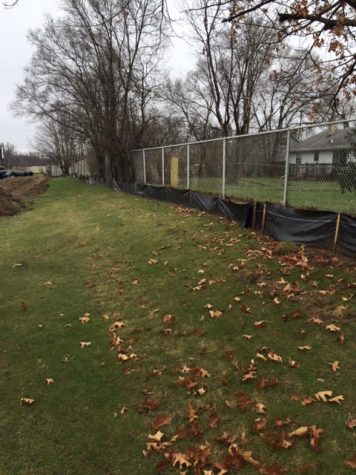
This is an example of the silt fences that are being used during the construction. According to Project Superintendent Joe LaFave, a silt fence protects “downslope surface waters and properties by removing suspended soils from runoff prior to leaving the site.”
Joe LaFave, Project Superintendent for Owen-Ames-Kimball, explained some of the specific environmental protections that are being implemented during the project. “A silt fence will surround the perimeter of the project until the competition of all the construction is finished and once the grass seeding has taken. Silt fence is a linear fence installed at the edge of earth disturbances. The purpose of silt fence is to protect downslope surface waters and properties by removing suspended soils from runoff prior to leaving the site,” he said. There are also storm sewer inlet protections measures to allow sediment to settle or be filtered out before it enters the storm sewer. “Spill kits are also located on the jobsite at all times,” LaFave said. “This is in the case of any environmentally harmful chemicals being released from the heavy construction equipment. This is only in emergency-type situations, but it is better to be safe.” Finally, LaFave said that all of the heavy-duty equipment on-site is Tier 4 type, which means that they all produce low emissions during use, protecting the environment from heavy exhaust.
Updates on the construction process can be found at the district’s blog: http://ppsconstruction.blogspot.com/



